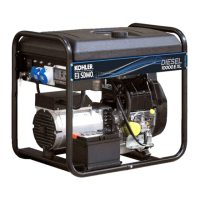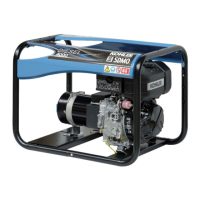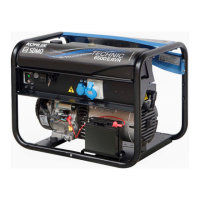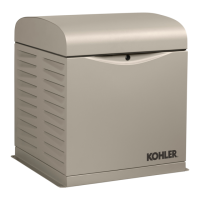2.7.4 Connection and choice of cables
For all connections, use flexible, strong rubber-sheathed cables which comply with standard IEC 60245-4 or equivalent cables, and
ensure that these are kept in perfect condition. Only use one item of class I electrical equipment per socket and connect up
equipment using a cable equipped with a PE protective conductor (green/yellow); this protective conductor is not required for
class II equipment. Adhere to the cross sections and lengths recommended in this table during installation or when using electrical
extensions.
Recommended cable cross section:
*This cable length is the maximum permitted length, and must not be exceeded.
Installation method = cables on raceway or non-drilled tablet/Permitted drop in voltage = 5%/Multi-core conductors/Cable type PVC 70°C (e.g.
H07RNF)/Ambient temperature =30°C.
2.8 Risk of hearing loss
RISK OF HEARING LOSS
Suitable hearing protection must be worn at all times when the unit is running.
2.9 Risks during handling operations, use and maintenance
For safety reasons, all operations must be carried out by staff with the necessary skills and using suitable
equipment. Maintenance must be carried out on a regular and conscientious basis, using only original parts. Gloves
must be worn.
Precautions to be observed when handling petroleum-based products:
RISK OF POISONING OR EXPLOSION
Respect the local regulations in force concerning the handling of petroleum products. Fill up
when the unit is switched off and the engine cold. When filling the tank, smoking, using a
naked flame, producing sparks and making telephone calls are forbidden. After filling, always
check that the tank's filler cap is properly tightened. Clean any traces of fuel with a clean cloth
and wait until the vapours have dispersed before starting the unit.
The fluids used by the units, such as oils and fuels, are dangerous products. Never ingest
them. Avoid prolonged or repeated contact with the skin.
Precautions to be observed when handling batteries:
RISK OF POISONING OR EXPLOSION
Follow the battery manufacturer's recommendations. Only use insulated tools. Keep away
from fire or naked flames. Always ensure adequate ventilation during charging.
3 Getting started with the generating set
3.1 Key to illustrations
The cover illustrations can be used to identify the various components of the unit. The procedures in the manual refer to these
illustrations using letters and numbers as identifiers: "A1" refers to the number 1 on figure A.
* Source transfer switch, battery charger…

